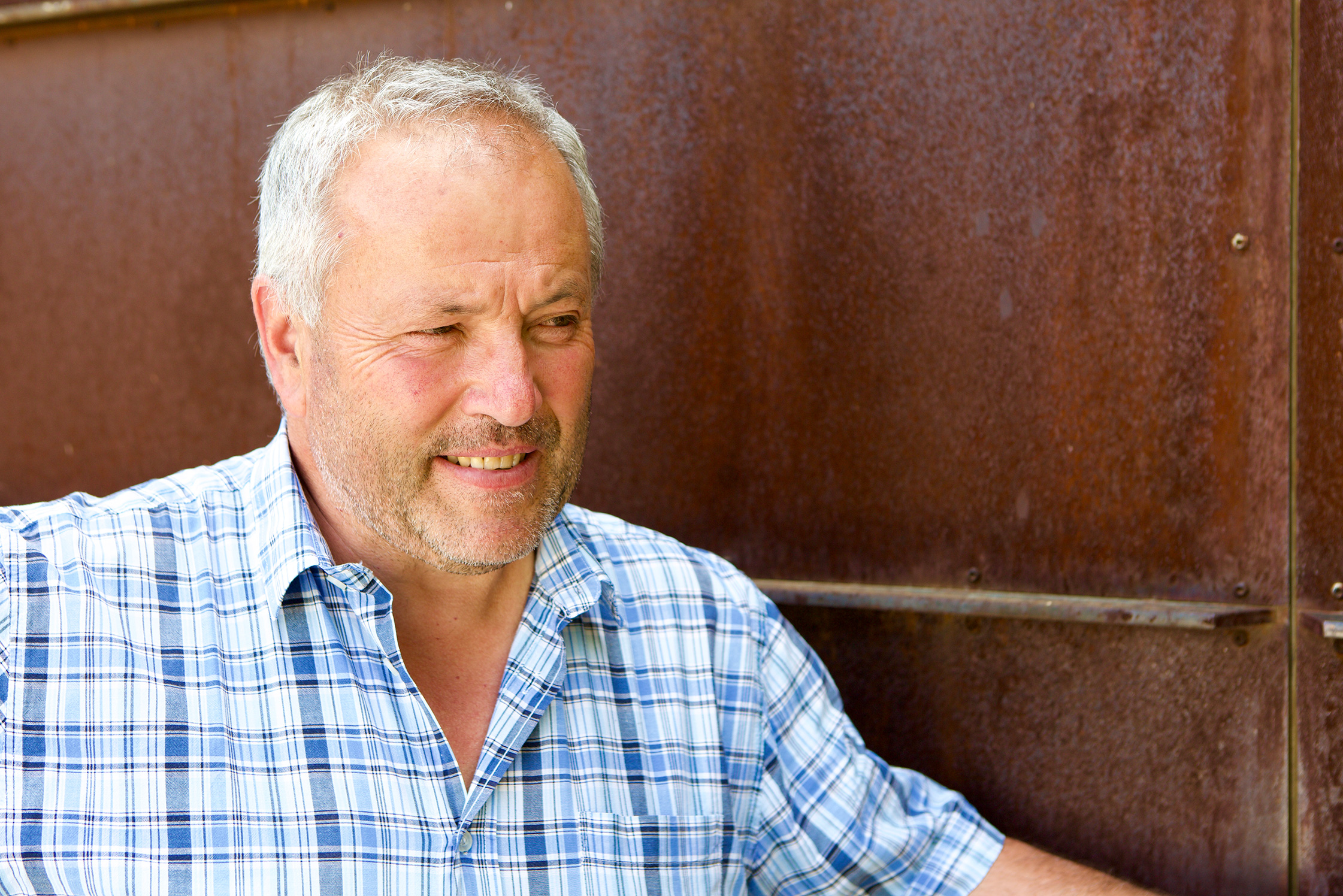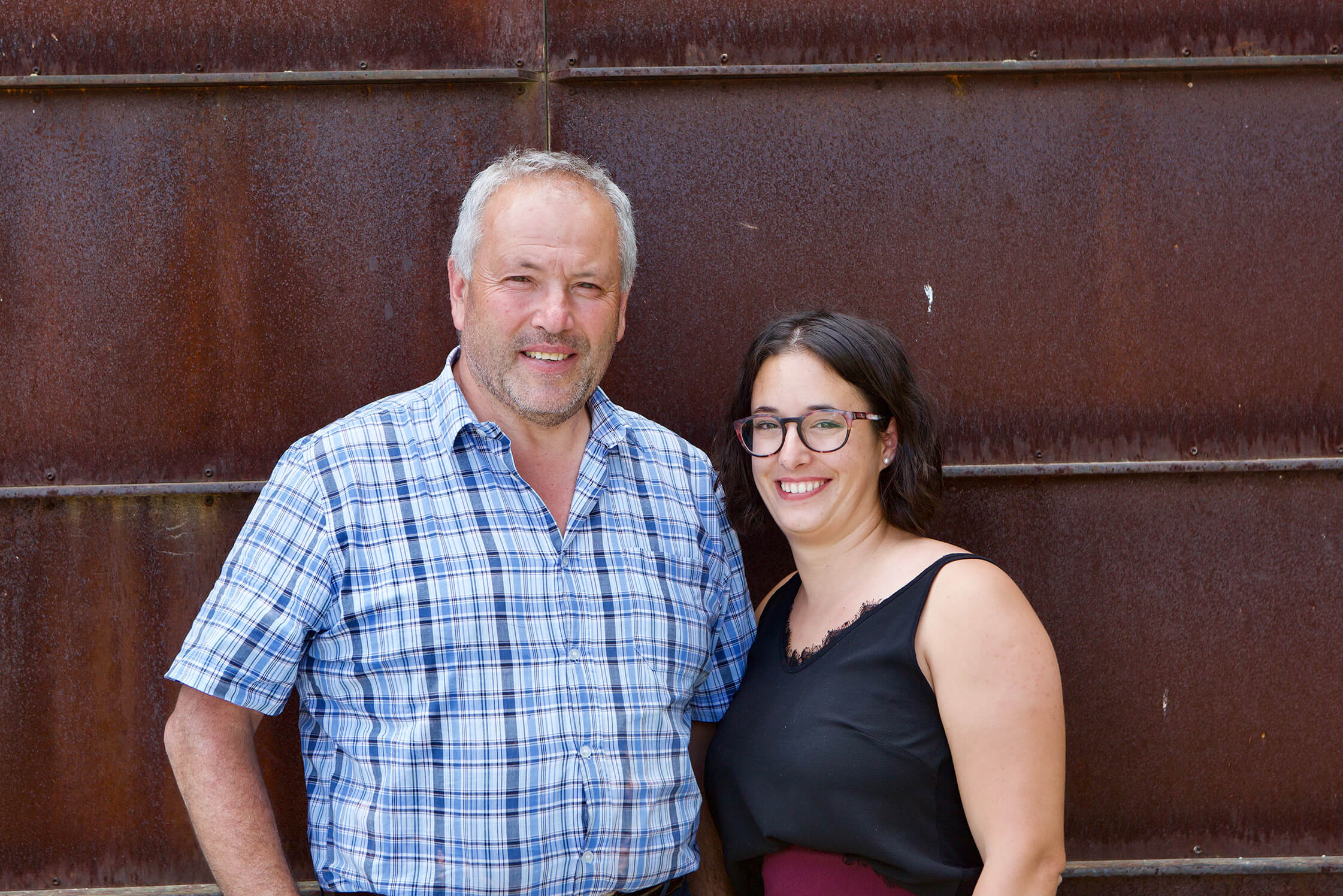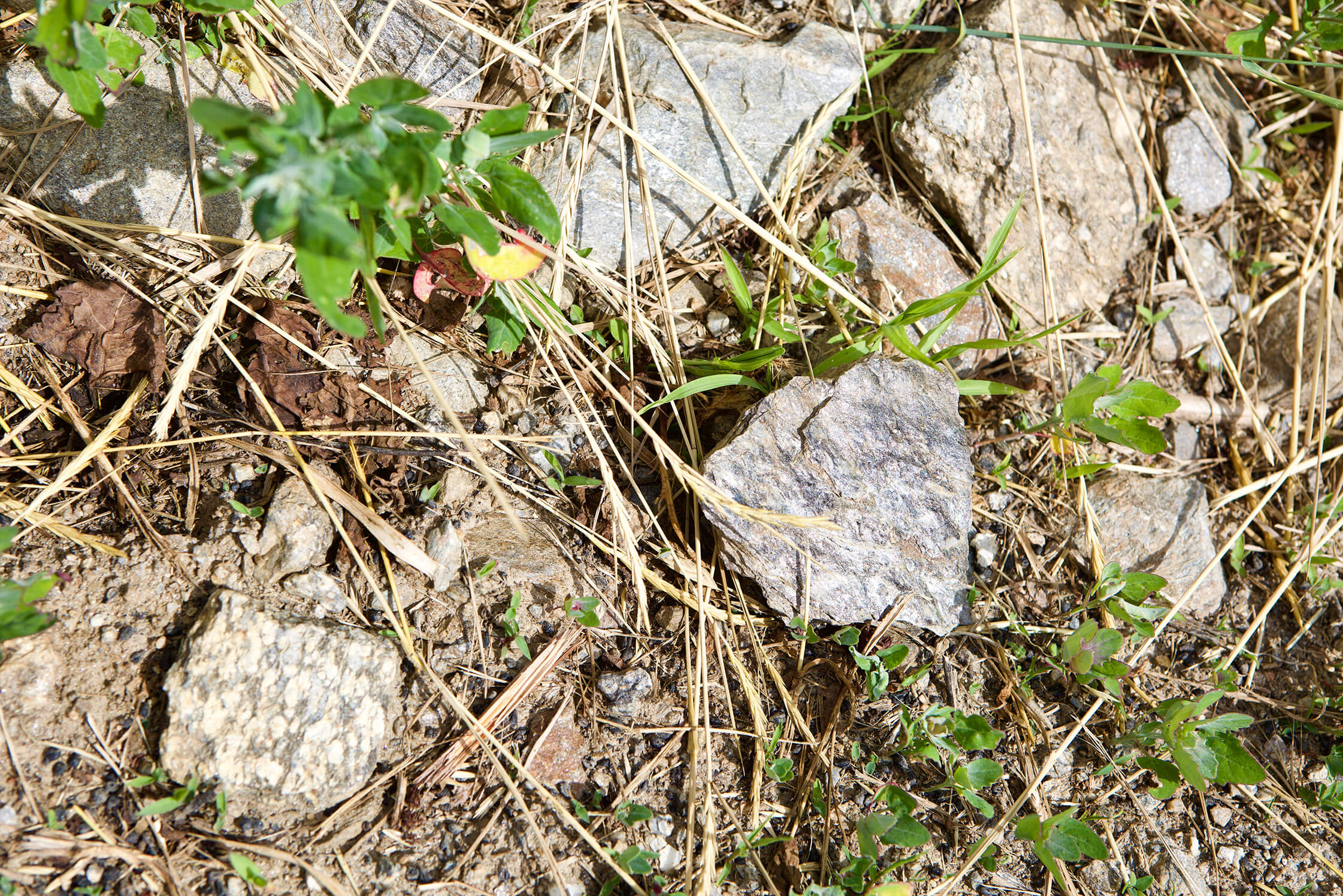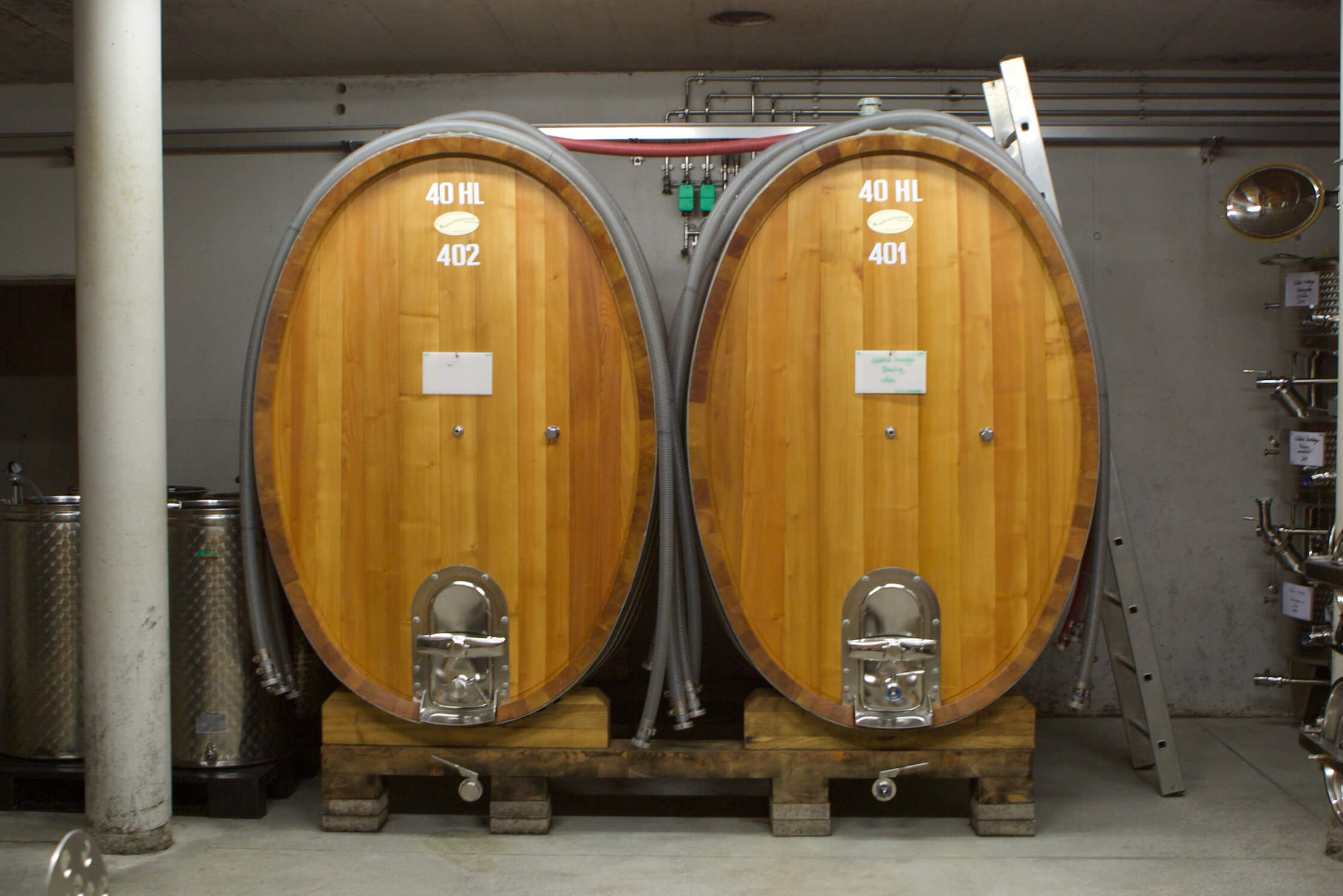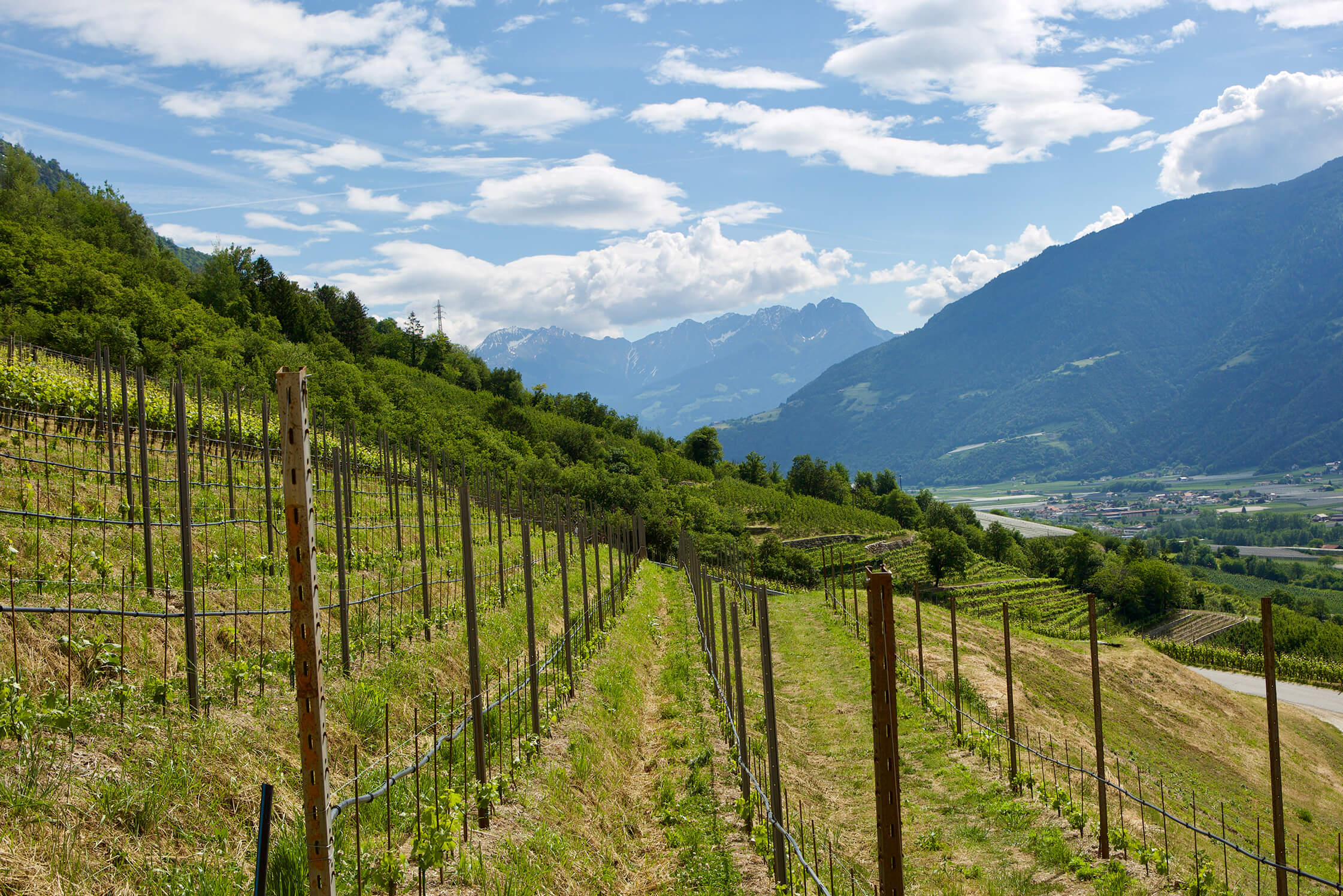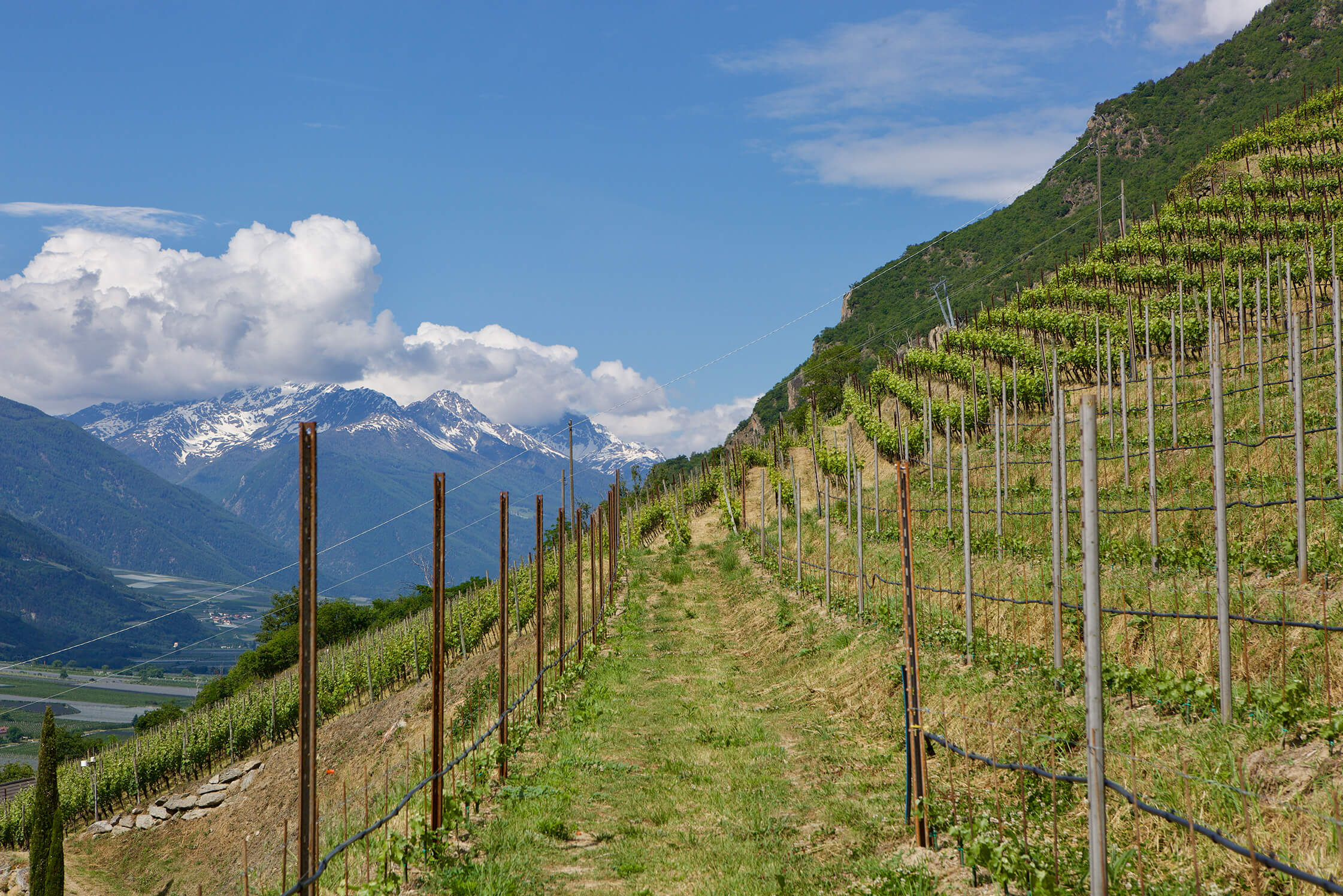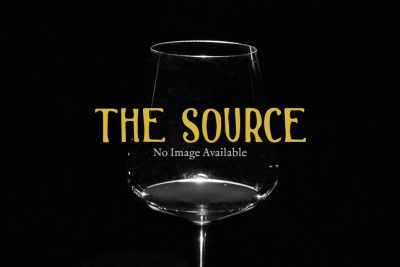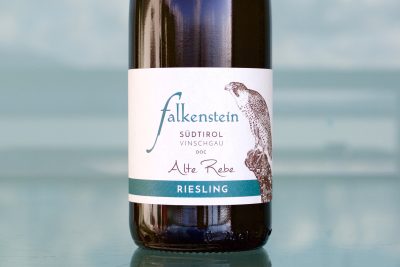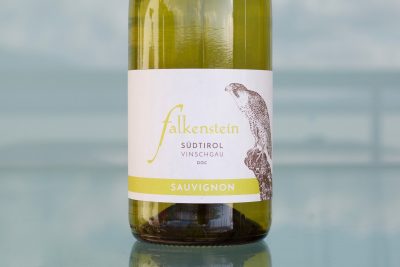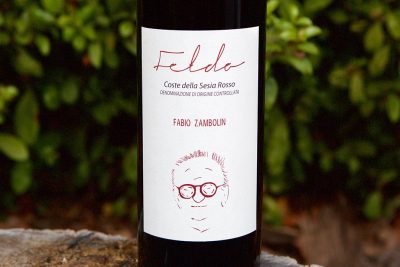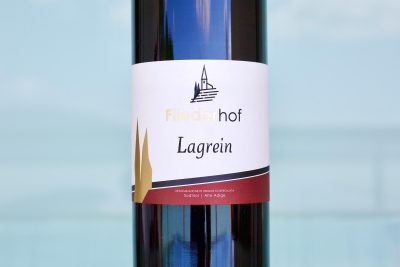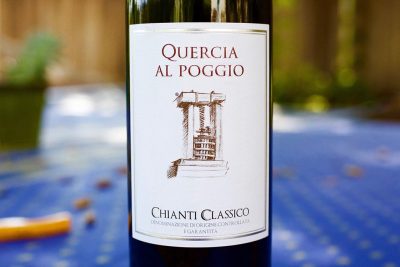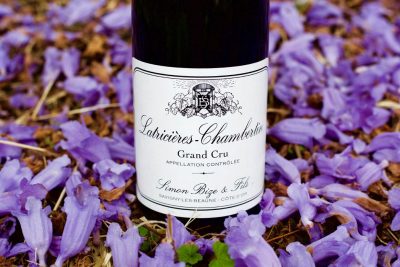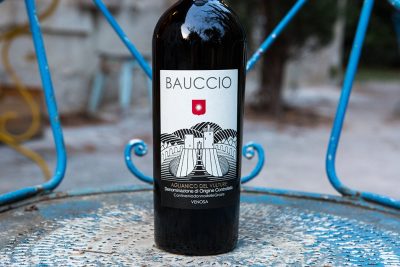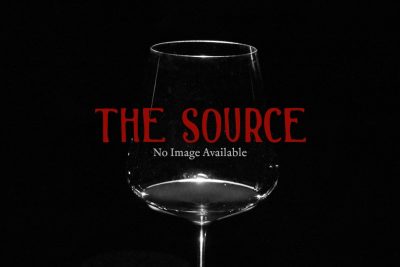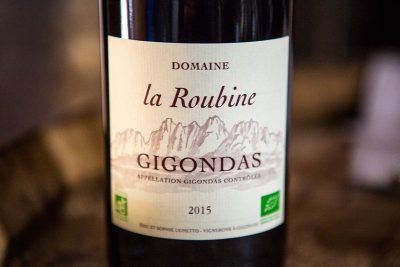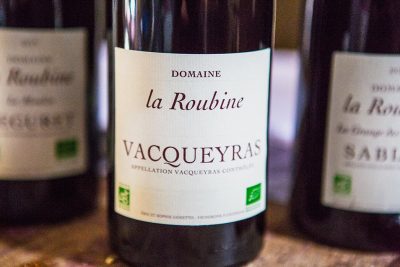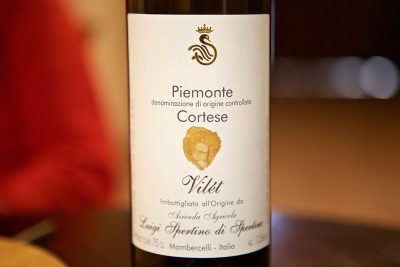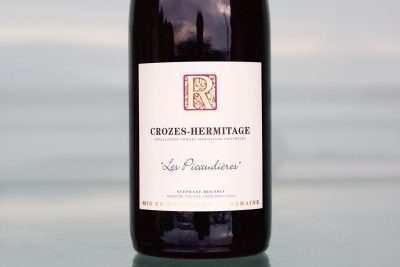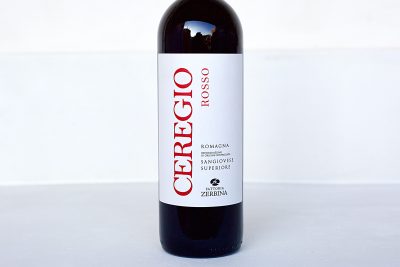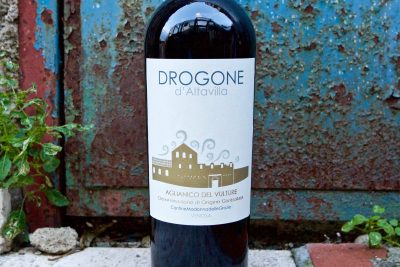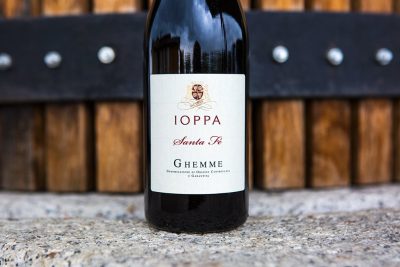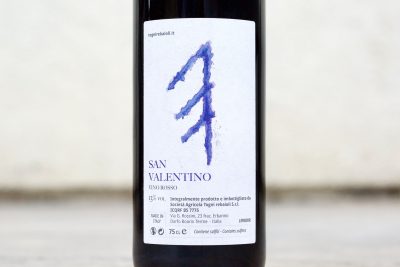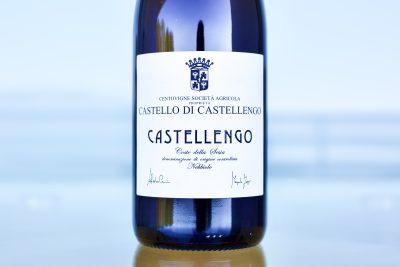Falkenstein
Photography and writing by Ted Vance.
Falkenstein is an Italian cantina with Austrian heritage, both in familial history and the greater influences on their wine style. Located in Italy’s Südtirol/Alto Adige, they produce many different wines (Weissburgunder, Sauvignon, Pinot Noir—all grapes that have been cultivated here for centuries), and many consider the Pratzner family the most compelling Riesling producer in Italy. For any serious dry Riesling lover, Falkenstein is not to be overlooked.
Circling Back Around
Falkenstein has been on our radar for more than a decade, and our first interaction with their wines was in 2011, just north of Verona. My business partner, Donny Sullivan, and I had just finished a vineyard and winery tour with Matilde Poggi, a lovely and extremely driven organic winegrower producing Bardolino near Lago de Garda. Mostly in red wine production, she had brought out a bottle of Falkenstein’s Riesling to kick off dinner. Immediately upon first smell, we were struck by the overall quality and impression of this Italian Riesling that, to us, clearly spoke an Austrian dialect, specifically with uncanny similarities to wines from the Wachau, Austria’s most illustrious and celebrated wine region. We were sure it was grown on the same type of bedrock as in the Wachau, and after a quick call to Franz Pratzner, Matilde’s close friend and the owner and winemaker at Falkenstein, she confirmed its similar geological heritage.
Falkenstein’s wines weren’t easy to find in the US, so I had to hunt for them on every Italian tour. I would scour wine lists to try to relive the experience, and even more to test whether my first impression could be validated, or if it was something my mind embellished until it became an obsession. When we started importing Italian wines directly ourselves (after working with an Italian importer for many years), connecting with Falkenstein was first on my list. Because of our company’s strong relationship with Austrian and German Riesling in our California market, with more than twenty producers between the two countries, they were a natural fit. We had long been closely involved with the renaissance of dry German Rieslings through luminaries, Klaus-Peter Keller, Clemens Busch and Emrich-Schönleber. Falkenstein was completely absent from the market and deserved to be better known. But when I made contact, I learned that they were already spoken for.
Then, in 2020, an unexpected message arrived. On behalf of Falkenstein, we were contacted by their export marketing team to inquire if we had interest in representing them in California. What luck, and what a thrill to finally have the privilege to represent this special winery that has never been far from our minds since that first bottle ten years ago.
The Pratzner Family
In the 1960s, apples and wine were the happening agricultural output in the Südtirol/Alto Adige region. The Pratzners were producing wine for their family’s restaurant where Franz’s grandma used to cook. Back then they produced Schiava (one of my favorite lighter-styled reds), Pinot Noir and Weissburgunder. Franz and his brother eventually split up the family heritage, with Franz taking the field work growing apples, grapes and making wine, and his brother the restaurant.
Gentle, jovial, and generally a quiet and reserved man, Franz Pratzner, and his wife, Bernadette, married in 1989 and started to move away from growing apples, cereals, potatoes—“everything mountain culture,” as their daughter Magdalena describes it—into a specialized focus on wine. Over time their two hectares grew to seven, and they also rent and organically work five more. Half of the production today is Riesling and the other half a mix of Pinot Noir, Weissburgunder (named as such instead of the more recognizable names, Pinot Bianco or Pinot Blanc, to respect the Austrian history in these parts), Sauvignon, and Gewürztraminer.
Organic wine conversion began around 2015 and in this area it’s much easier than other places with more than three hundred days of sunshine per year (similar to San Diego, California), and 350mm of average rainfall (a little more than San Diego and less than Santa Barbara, California). The wines at Falkenstein were already very well made, and with excellent craftsmanship, and the fastest way to build even better wines is to focus more on the grape growing, the daily focus of Bernadette. In this area with so much wind and sunshine, mildew pressure is minimal and results in far less vineyard treatments than other winegrowing areas.
In 2019, their firstborn daughter, Magdalena, rejoined the family business after switching from political science to enology at university in Vienna and globetrotting through new world wine regions working in vineyards and cellars. She will undoubtedly be an influence for small progressive changes in the wines, as she doesn’t intend to alter much. But her exposure to ideas and techniques outside of their off-the-beaten-path wine region with only about eighty total hectares in commercial production has brought some new ideas to the table. With the help and experience of Franz and a mother focused on perfecting the vineyard culture, we expect some interesting and fun things to emerge. Following Magdalena, the youngest daughter, Michaela, is back home from university and brings even more perspective from abroad, with a primary focus on the commercial side.
Lay of the Land
Located in the far northeastern section of Italy, just below the Austrian border to the north, Italy’s Friuli Venezia Giulia region to the east, and Lombardia to the west, Südtirol (Alto Adige) is one of the country’s most famous and important alpine wine regions. Each wine is marked by this windy and dry mountainous area with very little rainfall, freezing winters, and blazing hot summer days countered by brisk nights. It’s a perfect setting for viticulture and lends itself to greater ecological viticultural practices, like organics and biodynamics, with little threat of extraordinary losses compared to other regions with higher mildew pressure.
The region could also be described as one of the world’s most aesthetic and is definitely in the running for the most photogenic European wine region. It has crisp, clear blue skies with fluffy white clouds, the jagged greyish-white limestone Dolomite mountains that often go pink and violet at sunset and rounded but steep volcanic and metamorphic hills with greenery everywhere. Intense glacial activity in every direction led to massive surrounding cliffs of up to fifteen-hundred meters tall, overlooking windy and sometimes completely flat valley floors with starkly contrasting shades and colors throughout.
Geologic Setting
The geologic story of the Alps is complicated and its influence too great to recount in its entirety. Suffice it to say, the geological event that formed the Alps (the Alpine Orogeny) represents the most impactful geological movement in Europe with regard to the modern-day wine setting and is responsible for the creation of much of mainland Europe as we know it. It tilted France from north toward the west, changing the course of today’s Loire River from passing through Paris after joining the Seine; along with the Apennine Mountains to the south, the activity of the Alps uplifted and filled what is Italy’s expansive Po Valley, a former sea that filled with so much sediments from the nearby mountains it eventually disappeared; it caused new volcanic activity in the center of France’s ancient Massif Central, today home to the wines of the Auvergne; it gave the Côte d’Or and Jura their opposing slopes with the expansive Saône Valley (Graben) separating them; gave rise to the French and Spanish Pyrenees; created the northern end of Corsica, geologically known as Alpine Corsica, a contrasting collection of mostly metamorphic rocks that abut the ancient granites that cover the majority of the island; it gave birth to the massive Rhine Graben, a valley that separates France’s Vosges Mountains from Germany’s Black Forest; it pushed Südtirol’s Dolomites into place and caused massive volcanism all throughout northern Italy, including Südtirol.
Aside from the Dolomites (one of my favorite geological comeback stories of all time that will be covered in an upcoming geological essay on our website), formed by the volcanic activity and metamorphosis of many rock formations due to the tectonic mashup of the Eurasian and African plates, the Südtirol is also highly influenced by glacial activity. The monster glaciers that passed through dug deep into these new mountains, pulling down mountainsides, scraping the edges, and carving out massive pathways that today usually have small rivers running through with massive cliffs or steep mountain slopes on each side. The glaciers carved out and exposed all sorts of different formations thousands of feet below the earth’s surface, like they did in Val Venosta, on the far western side of Südtirol, home to the vineyards of Falkenstein.
Mostly known for high quality white wine production, Val Venosta (or Vinschgau, in the local German dialect, and the name of the local and most recently named DOC in Südtirol established in 1995) follows the relief of a glacial valley that runs east to west, presenting a long mountainside with an ideal southern exposure. Despite the advantages already covered, all the vineyards in these parts must have the correct exposure on northern positions to provide some angle of a south face, otherwise there is little chance of achieving palatable ripeness.
To work Falkenstein’s steeply-terraced vineyards, one needs to be half billy goat to find firm footing for each step upward on its slippery, rocky slopes. All face due south, except a Pinot Noir parcel that faces southwest. Above and on both sides are wild forest and below are mostly apple orchards and a mix of fruit-bearing trees. The vines have an average age of ten to fifteen years old (as of 2021) with the oldest Riesling and Weissburgunder planted in the mid-1980s, and some Pinot Noir sections planted half a century ago. Their vine density is unusually high with nine to thirteen thousand plants per hectare, which makes them only workable by hand or with small machines that can fit between the snug rows. This density creates competition between vines with the purpose of stressing them and forcing their root systems downward, deeper into the bedrock below in search of water. This deeper plunge puts roots in contact with a greater diversity of rock and soil layers, and the root enzymes with other bacteria and mycorrhizal fungi work with the vine roots to further break rock down, creating more soil in the process and allowing for more assimilable minerals and nutrients for the vines to uptake. In theory, this will add to the wine’s complexity. However, some years artificial irrigation is necessary, and it’s legal to administer it in the region between the first of April and twenty first of October.
Vineyard altitudes range between 550 and 900 meters and the vines are grown on a mix of mostly metamorphic rocks like slate, schist and gneiss, and some granite. (The famous Dolomite limestone formations are further east and on the other side of the region’s main city, Bolzano.) The pale white, sandy topsoil is derived from the bedrock below as well as depositions from glacial activity that either leaves rock behind or grinds it down.
All these factors combined with the concentrating effect of the ever-present summer sun dresses the wines in defined textures and angles, big mineral and metal characteristics, high tones, energetic acidity, fresh and tart but ripe Alpine fruits of almost all types depending on each grape’s typicity, and a mouthwatering finish.
The Cellar
Falkenstein has a state-of-the-art cellar custom built between 2003 and 2009 to fit precisely what they grow and not much else. It’s tricked-out with gorgeous medium-sized, mostly 10hl to 18hl acacia wood botti, and a few older but new-looking 40hl botti for Riesling. Acacia is the preferred wood of many producers in Südtirol due to its tight grain that creates wines with a greater analog, harmonic flow versus the sharper, tighter lines of smaller barrels and often those made of French oak—think of Acacia wood’s influence generating the soul surfer on the longboard, not the short-board shredder. However, Falkenstein’s Pinot Noir is aged in smaller-format French Burgundy barrels, seemingly a global tradition with this variety.
The Sudtirol Vinschau DOC Wines
All of the varieties labeled with the Südtirol Vinschau DOC (except the Alte Reben Riesling and Phileo Weissburgunder) all grow on a bedrock mixture of low to high-grade metamorphic rock (slate, schist, gneiss) and igneous rock, like granite, with sandy topsoil derived from the underlying bedrock and glacial depositions.
Once harvested and fermented in 10hl-18hl botti followed by aging ten months in the same barrels, they are bottled and aged for at least a year before going to market. The overall fruit notes in this part of Südtirol veer toward the fresher, more taut side, rather than more opulent and more maturely ripened fruit.
The one-and-a-half hectares of Sauvignon grow at 600-700 meters and produce wines described by the Pratzners as typically marked with black currant (believe it or not, it’s there), grapefruit and elderberry. The Sauvignon is racy and most often matured on the vine past any notable pyrazine characteristics commonly found in this variety. In Sudtirol, this grape is often grown on dolomite limestone, which can impart deafening intensity to the wines. Falkenstein’s, grown on more acidic soils, tend to render wines with a more delicate finish and mouth-watering saltiness—both welcome characteristics for this intense and very specific grape variety.
While Riesling, Sauvignon and Pinot Noir are ubiquitous, Weissburgunder (more commonly known as either Pinot Blanc or Pinot Bianco) is less so. In Südtirol, it’s often considered the top white variety and when tasting those from the best local cellars, it’s easy to see why. On Jancis Robinson’s website, she describes the grape as it usually presents itself in most regions: “Useful rather than exciting.” She hit the nail on the head for what this grape offers most of the time (especially further east in Friuli), but in Alpine country it thrives and absorbs and expresses the terroir beautifully. In Südtirol, Weissburgunder is truly their best white, on average, and a lot more exciting than those produced elsewhere. Many of the whites grown in Südtirol grow very well on the Dolomite limestone formations further east and, just like the Sauvignon grown there, can be intensely racy and fully aromatic and sharply textured. In the middle of the overall region, on porphyry rock and glacial moraines, usually the hottest zones, they tend to be richer and slightly glycerol, salty, expressive of spices, honey, and more mature stone fruit. In the coldest areas and on more acidic soils, like those of Falkenstein, the combination of bedrock, sandy soils, bright sunny and warm days and frigid nights keep it fresh, lifted and complex; it’s never a pushover wine inside special terroirs like these.
The six hectares of Riesling vary in vine age and are planted with a multitude of different biotypes with the oldest established in the mid-1980s, and others up until the late 2000s. The selection for the first Riesling in the range (the one bottled with only Südtirol Vinschau DOC demarcated on the label) comes mostly from the younger vines and the upper row of clusters of the older vines. The altitude ranges between 600-900 meters, which offers a broader span of characteristics. The Pratzners describe theirs as typically dominated by citrus and stone fruit notes and salty minerality. If one could compare it to elsewhere, it could land somewhere between an Austrian Federspiel and Smaragd in ripeness with Kremstal fruit qualities, or an earlier selection of German Spätlese Trocken from the east end of one of the country’s most historic and celebrated dry Riesling regions, Rheingau.
Falkenstein’s Alte Reben (Old Vines, in German) bottling comes from, well…, you guessed it, the oldest vines, grown on slate soils. There is also a cluster selection usually taken from the lowest hanging fruit on the vine, which has a slightly greater degree of phenolic ripeness and fuller flavor than the clusters above it used for the first Riesling in the range. After fermentation it’s aged in 40hl acacia botti for ten months followed by five months in steel barrels before bottling. The Pratzners note that every year the wine expresses intense tangerine aromas and tastes (which is easily verifiable), with other citrus fruits, along with a flinty characteristic. The first vintage for this wine was 2015.
The Pinot Noir grapes are cooled down for three days once inside the cellar, followed by crush made with half whole bunches and a fermentation that lasts around two weeks. After fermentation the grapes are pressed and settled, then put to small oak casks for one year of aging followed by seven months in botti. The bottles rest in the cellar for two years before going to market. Its overall impression carries greater Alpine nuances of wild, tense and aromatic, snappy-to-the-tooth red fruits. The wood aging is apparent upon opening, but in a few minutes the wine’s generous fruit qualities begin to overtake and swallow the wood—just like most Burgundy wines. Its fifty-year-old vines bring some grounding and more mature aspects to this ethereal wine that gushes with layers of beguiling red fruit backed with a surprisingly extensive and authentic array of complex nuances. -TV
Falkenstein - 2017 Blauburgunder
Out of stock

